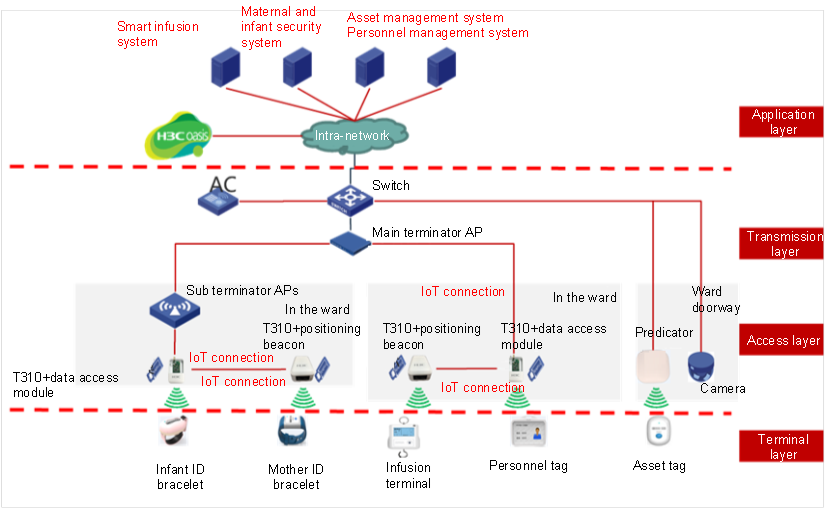IoT
Background overview:
At present, the digital and networking information economy is evolving into an intelligence-driven information economy. The future will be an era of the Internet of Things (IoT) where everything is interconnected. China attaches great importance to the development of the healthcare industry, and has successively launched a series of policies to promote the digital and intelligent construction of the industry. The Outline of the National Healthcare Service System (2015-2020) proposes that new technologies (such as mobile Internet, IoT, cloud computing, and wearable devices) must be applied to promote the development of health information and smart medical services that benefit the public. Efforts must be doubled to promote the application of health big data and to gradually change service models for improved service capabilities and management quality.
To accelerate the transformation from informatization to intelligence, it is a rigid requirement for the construction of smart hospitals to accomplish perceptual data interconnection, data sharing and exchange, and solve the problem of data silos through an IoT-enabled open platform with new technologies such as IoT and cloud computing.
Customer needs:
Policy requirements: The National Criteria and Standards of Hospital Informatization Construction (Trial) specifies that hospitals should provide functions and services such as patient positioning, patient safety, data collection, and asset positioning.
Security requirements: Large and medium-sized hospitals are usually unable to monitor the conditions of each area in real time due to a large flow of people. Therefore, it is necessary for the hospital to find a way to ensure maternal and infant security, monitor and assist in real time the critically ill patients, monitor the processes in the disinfection room, and ensure the personal safety of doctors and patients.
Refined management: Hospitals have a higher requirement for refined management such as real-time waste tracking, in-hospital asset sorting, and intelligent management of power systems due to their special attributes.
Service requirements: Smart services such as intelligent infusion, mobile ward rounds, and medical guidance can not only bring better experience to patients, but also reduce the workload of medical staff and improve the overall operational efficiency of the hospital.
Solution:

For the H3C IoT solution for healthcare, the terminal is connected to a wireless AP and gateway with IoT interface via an IoT module and updates data to the IoT-based Oasis Cloud platform. It enables functions such as positioning and monitoring without creating a new network, helping hospitals implement smart management in scenarios such as mobile ward rounds, smart infusion, personnel and asset management, bed monitoring, and key patient positioning. This solution helps improve patient experiences and service quality of the hospital.
Advantages:
1. Multi-network integration to reduce cost: The solution enables seamless expansion of WLANs to IoT. With the expansion of a single node without changing the main network, IoT can access WLANs and expand its services, simplifying network deployment and meeting multiple service needs of the hospitals with just one network.
2. Support connection of multiple IoT protocols: It supports WLAN, BLE, ZigBee, and RFID connections at the same time. Various business application data can be flexibly transmitted through the WLANs to meet various IoT service needs of the hospital.
3. Seamless roaming at full frequency to ensure service continuity: The uplink network of IoT services uses a dual-band network (2.4 GHz and 5 GHz), both of which support seamless roaming of WLAN sub-AP extension IoT service.
4. Perfect medical IoT ecosystem: H3C has made in-depth cooperation with 15 to 20 well-known independent software vendors (ISVs) in the industry, enabling one-stop delivery of infrastructure and upper-layer applications.


